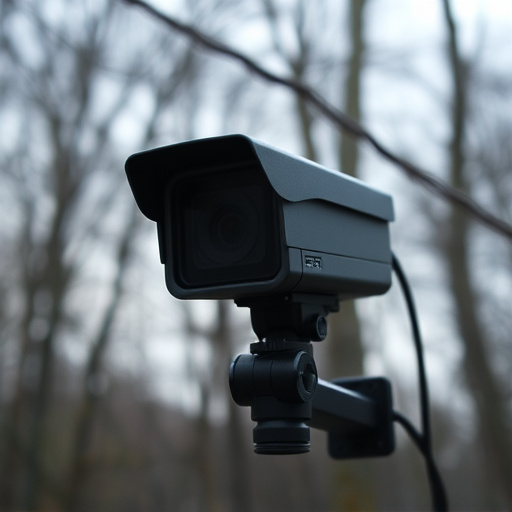RF (Radio Frequency) detectors are essential tools for enhancing home security by identifying hidden cameras in discreet locations like corners, behind furniture, and small crevices. To conduct an effective sweep, power off and isolate electronic devices, position the detector 6-8 inches away, and slowly scan areas with high electronic density. Optimal best hidden camera locations include entry points, high-traffic areas, and creative spots like behind furniture or inside cabinets to maintain a robust yet unobtrusive security setup. Regular RF detector sweeps ensure the system's effectiveness and provide peace of mind.
Uncover hidden threats with an RF detector sweep—a powerful tool in your home security arsenal. This tutorial guides you through identifying and neutralizing hidden cameras, focusing on optimal placement and effective detection methods.
Learn how RF detectors play a pivotal role in safeguarding your privacy by pinpointing covert surveillance devices. Discover the best hidden camera locations in your home and master a step-by-step sweep process for comprehensive protection. Enhance your security posture effortlessly with these essential best practices.
- Understanding RF Detectors and Their Role in Home Security
- Identifying Potential Hidden Camera Locations in Your Home
- Conducting a Comprehensive RF Detector Sweep: Step-by-Step Guide
- Best Practices for Maintaining Unobtrusive Home Security
Understanding RF Detectors and Their Role in Home Security
RF (Radio Frequency) detectors are an essential tool in home security, playing a crucial role in identifying and locating hidden cameras, often referred to as “bug” cameras, which can be strategically placed in various best hidden camera locations around your home. These devices operate by detecting wireless signals emitted by hidden cameras, enabling users to uncover potential privacy invaders.
By sweeping through different frequencies, RF detectors pick up on the unique signals these cameras transmit, helping homeowners ensure their privacy and security. This is particularly important when it comes to protecting personal spaces and preventing unwanted surveillance, especially in areas like bedrooms, bathrooms, and home offices, which are often targeted by hidden camera installations. With an RF detector, individuals can proactively maintain a secure environment.
Identifying Potential Hidden Camera Locations in Your Home
When it comes to home security, identifying potential hidden camera locations is a proactive step to ensuring your privacy. The best hidden camera locations in your home often include areas with limited visibility and easy access, such as corners of rooms, behind furniture, or in small crevices where surveillance devices can be discreetly placed. It’s also wise to consider common spots like above door frames, inside cabinets, and under desks, where cameras could capture sensitive information without raising suspicion.
Using an RF (radio frequency) detector sweep is a highly effective method for detecting these hidden devices. By scanning your surroundings with an RF detector, you can identify the electromagnetic signals emitted by hidden cameras, helping you pinpoint their locations. This process allows homeowners to take control of their security and make informed decisions about where to strengthen their defenses further, ensuring peace of mind in their living spaces.
Conducting a Comprehensive RF Detector Sweep: Step-by-Step Guide
Conducting a Comprehensive RF Detector Sweep involves a systematic approach to ensure thorough security assessments, especially in identifying best hidden camera locations for home security. Start by powering off all electronic devices and separating them from power sources to eliminate interference. Next, position your RF detector at a distance of 6-8 inches from the area you’re scanning, ensuring it’s perpendicular to potential hidden camera signals.
Sweep the device slowly in a back-and-forth motion, covering every inch of the target zone. Pay particular attention to areas with high electronic density, such as corners and behind furniture. As you move, observe the detector’s display, looking for any peaks or anomalies that could indicate a hidden camera’s presence. Remember, the best hidden camera locations are often in unobtrusive places, so be vigilant and meticulous in your sweep to guarantee optimal home security.
Best Practices for Maintaining Unobtrusive Home Security
When setting up a home security system with hidden cameras, discretion is key. The best practice is to strategically place them in areas that offer optimal coverage while remaining concealed. Common best hidden camera locations include entry points like doors and windows, as well as high-traffic zones within your home.
Consider spaces behind furniture or inside cabinets to keep the devices out of sight. It’s essential to regularly test these systems using an RF detector sweep to ensure they function properly and are not easily detectable. By maintaining a robust yet unobtrusive home security setup, you can effectively deter potential intruders while preserving the peace of mind that comes with knowing your home is protected.
RF detectors are powerful tools in enhancing your home security by identifying hidden cameras, ensuring privacy and peace of mind. By understanding these devices and conducting thorough sweeps at key best hidden camera locations, you can maintain a secure environment. Remember, proactive measures through regular checks and adhering to best practices will safeguard your personal spaces from potential surveillance.
